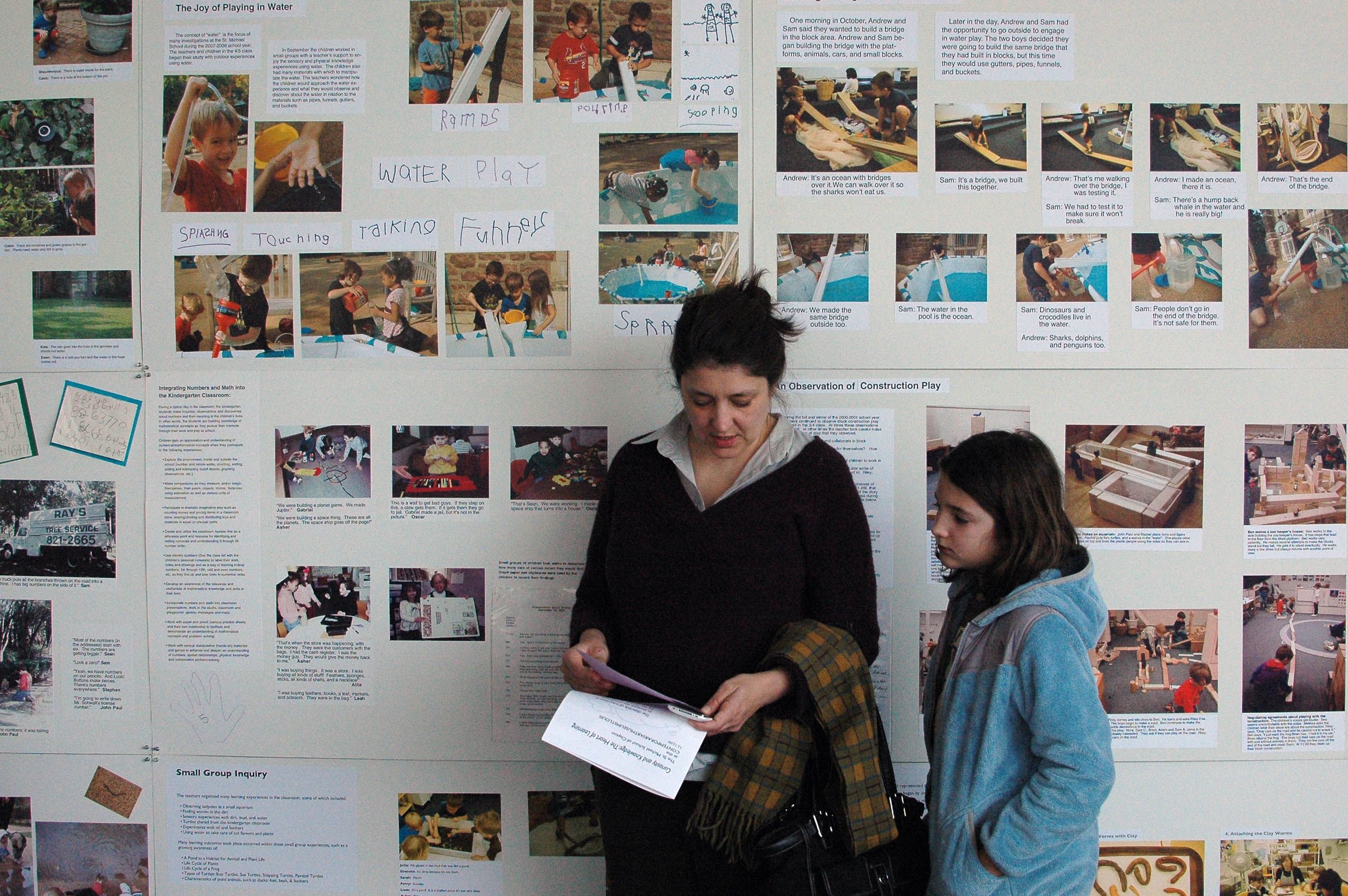 The St. Michael School of Clayton (SMS), 5 miles from the Gateway Arch in St. Louis, MO, has recently uploaded to their website an impressive array of documentation panels, 21 in all. Each panel is easily viewed and read as a PDF. SMS has also printed each of the panels as a 2’x3’ poster to display in the hallways, turning the school into a gallery of student work.
The St. Michael School of Clayton (SMS), 5 miles from the Gateway Arch in St. Louis, MO, has recently uploaded to their website an impressive array of documentation panels, 21 in all. Each panel is easily viewed and read as a PDF. SMS has also printed each of the panels as a 2’x3’ poster to display in the hallways, turning the school into a gallery of student work.
The SMS faculty has been composing documentation panels for over 20 years having adapted this reflective practice from their colleagues/mentors in early childhoods schools in Reggio Emilia, Italy. The first panels were attempts to tell the stories of student projects through teacher narrative, photos of students working, student dialogue and artifacts of student work. Some displays would take up entire walls of the hallways…as large as 4 feet high and 15-20 feet long. Most also included a long and detailed narrative by the guiding teachers…more than you’d want to know…however, each narrative was a concerted attempt to articulate the process that the students went through and to explain the artifacts as evidence of learning.
The current panels are much more succinct and they are composed with a high level of graphic design skill, yet they include all the same elements as the original panels. As you read through the panels you get a sense of the essence of a project, rather than a detailed explanation of the process. However, what is more clear than in the older panels, is the connection between spontaneous or planned provocations and the deliberate development of skills and habits of mind.
For instance, in the panel Mapping the Movement of Animals we see that the teachers artfully captured the students’ fascination with a class cat and connected it with the concept and tool of mapping. The teachers even helped the students transfer this knowledge to the science lab where they were studying millipedes.
From a whole school perspective, including preprimary through eighth grade, when you read through the panels, you develop a strong sense of the ways a strong reflective practice effects the day to day life in the school; and how the daily intentions the teachers support a gradual, profound development of skills and habits of mind within the students.
That SMS has uploaded their panels to their website for easy access to all is a gift to all educators...a generous collaborative action for which all can be thankful.


